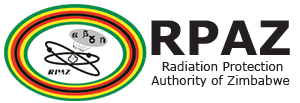WHAT IS RADIATION?
Radiation refers to electromagnetic waves that carry energy that comes from a source and travels through space and may be able to penetrate various materials. There are two types of radiation: non-ionizing and ionizing radiation. Light, radio waves, cell phone waves and microwaves are examples of non-ionizing radiation.
Ionizing radiation
It is produced by unstable atoms. Atoms with unstable nuclei are said to be radioactive. In order to reach stability, these atoms give off, or emit, the excess energy or mass. These emissions are called radiation. Radiation can also be produced by high voltage devices, for example, x-ray machines.
SOURCES OF RADIATION EXPOSURE
Radiation exposure falls into two main categories: Exposure from natural sources and exposure from artificial sources. These sources can impart doses to human tissues by external irradiation or internal (inhalation or ingestion). Natural radiation can be of either cosmic or from the earth and its atmosphere. The exposure from natural radiation is so low that it presents no significant health risk.
The rest of the dose comes from artificial sources, with medical radiation use being responsible for just under 20% of the total average dose. The remaining 0.4% consists of dose contributions from nuclear weapons testing fall-out, occupational exposure, nuclear power plant discharges and radiation from nuclear accidents such as Chernobyl.
TYPES OF RADIATION EXPOSURE
Radiation exposure is classified in terms of whether thae radiation is received at work, by patients or by the public.
Occupational Exposure
This type of exposure is one received by workers in the course of authorised work with ionising radiation and/or radiation sources.
Medical exposure
Exposure incurred by patients as part of their own medical or dental diagnosis or treatment.
Public exposure
It is exposure incurred by members of the public from authorised radiation sources and practices, excluding any occupational or medical exposure and the normal local natural background.
RADIATION PROTECTION
Radiation protection is the science and practice of limiting the damage caused by radiation in man and the environment. In order for radiation protection to be effective, there are three fundamental safety principles that need to be adhered to as indicated below:
Justification of the practice
Ionizing radiation will only be used in instances where the benefits outweigh the risks.
Optimization of the protection
The radiation dose received should always be kept As Low As Reasonably Achievable (ALARA).
Limitation of the individual dose
Persons working with radiation must be protected to limit any unacceptable exposure outside set international dose limits.
As far as individual protection is concerned, there are three basic rules that should be followed as shown in the diagram below:
Reducing the time of exposure to radiation sources (Time), increasing the distance from a radiation source (Distance) and shielding from a radiation source (Shielding).

